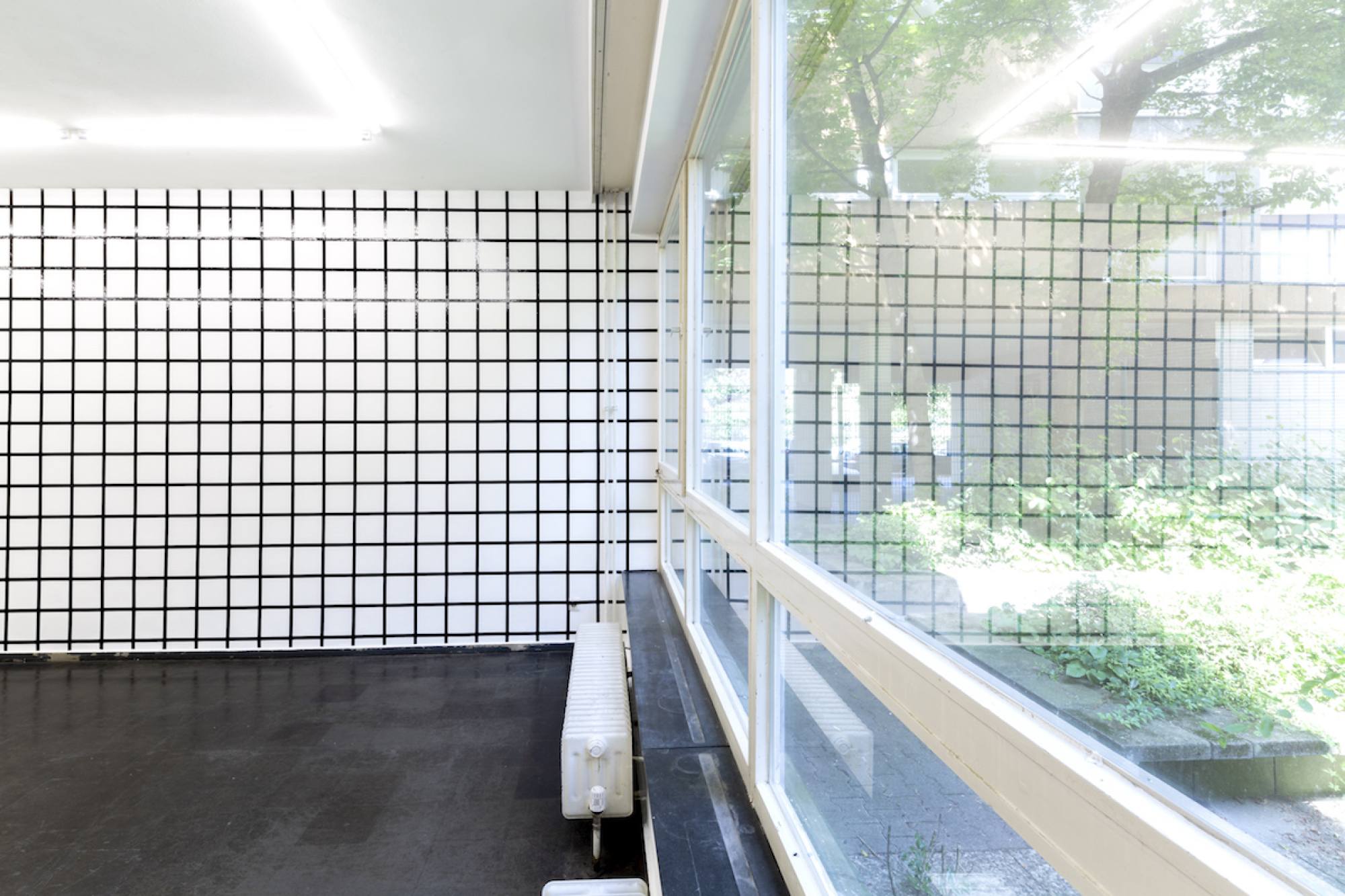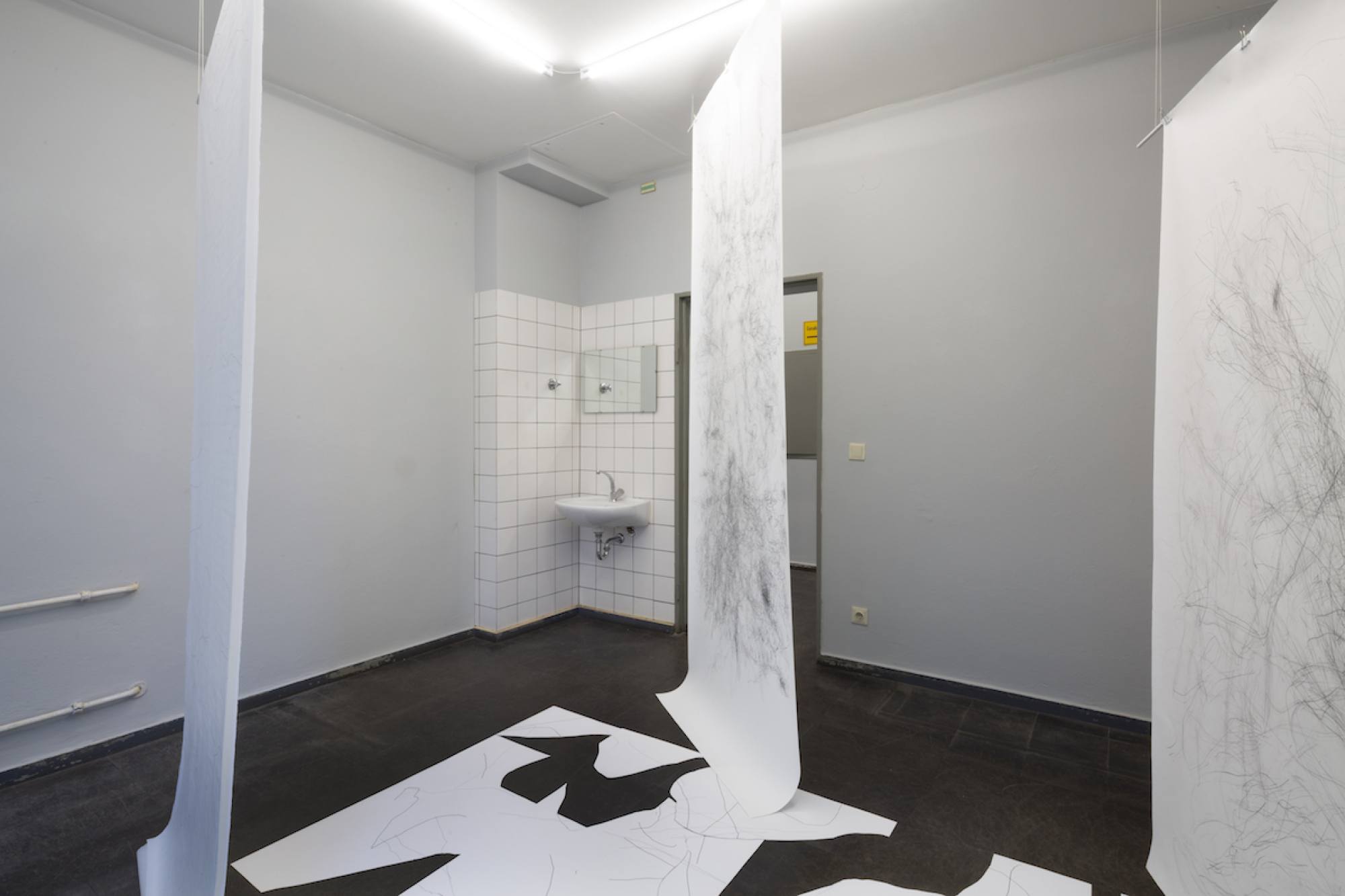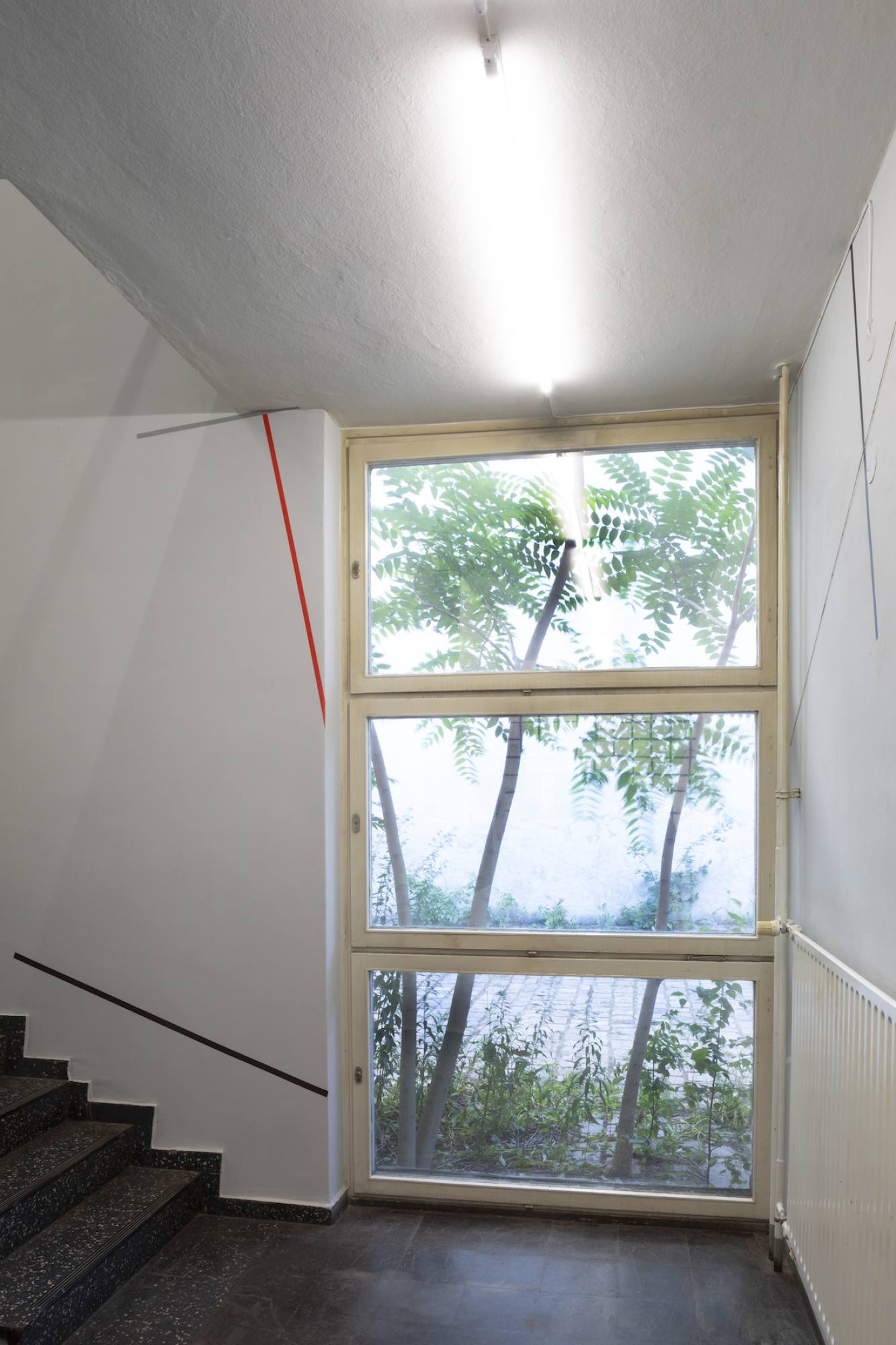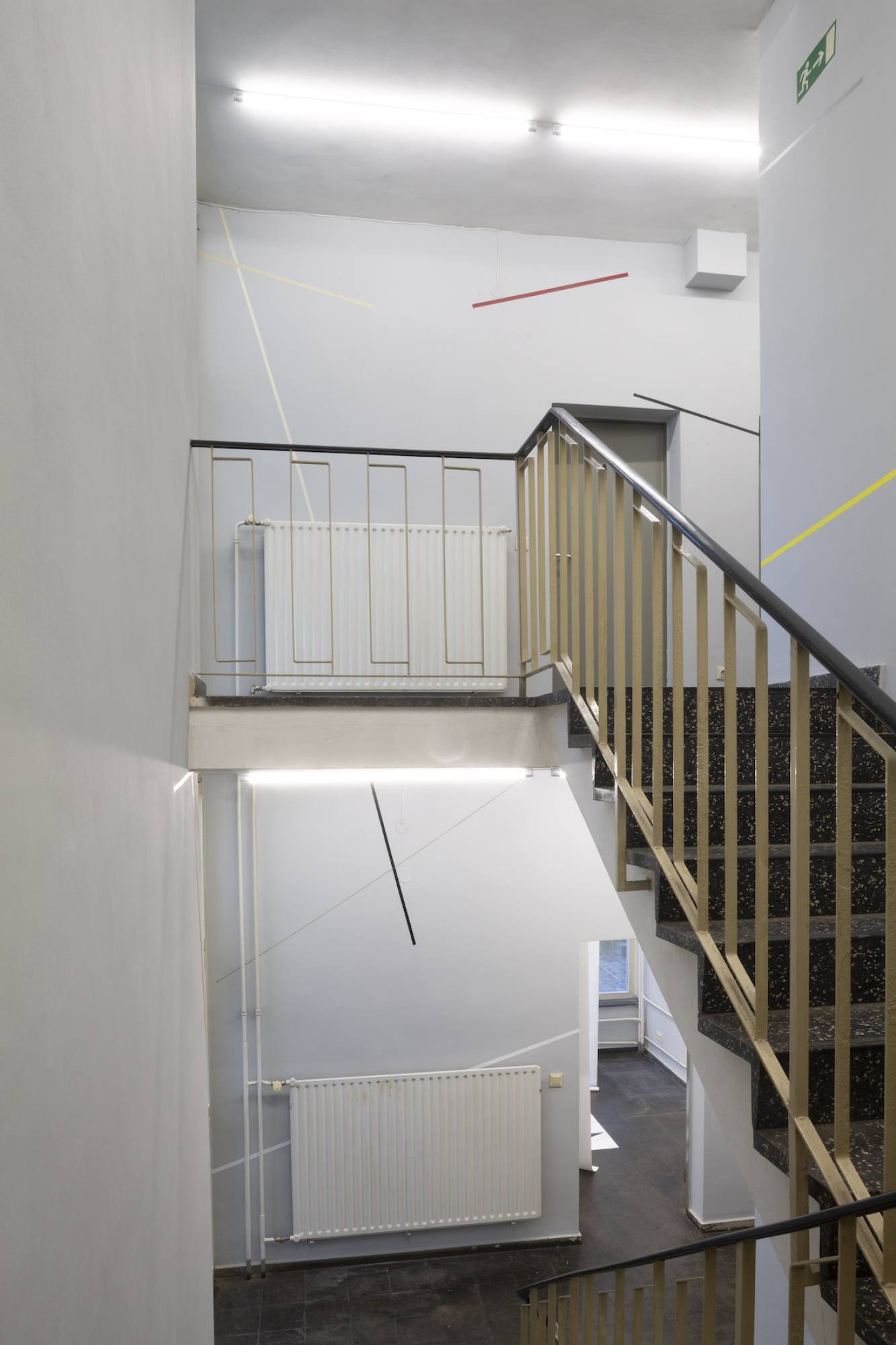

















CHARTA#1 - Movement and Space
Vanessa Enriquez, Timo Herbst,
Katja Pudor, Andreas Schmid, Esther Stocker & Anna-Maria Bogner
curated by Jan-Philipp Frühsorge & Stephan Klee
curatorial Assistant Matteo Lorusso
Opening Fri 25 Jun 2 - 9 pm
25 Jun - 17 Jul 2021
wed - sat 2 - 6 pm
Finissage Sat 17 Jul 6 - 8 pm
including HAUNT Session by
Zé Leônidas
Guided Tours with the HAUNT Melodie Team
Fri 25 Jun at 3 pm or 4 pm
Sat 3 Jul at 5 pm or 6 pm
Sat 17 Jul at 5 pm or 6 pm
please reserve at rsvp@frontviews.de
Frontviews at HAUNT
Kluckstraße 23 A / yard
D - 10785 Berlin
Please wear a mask.
IG @frontviews_berlin
FB FrontviewsBerlin
in close cooperation with Dr. Julius | ap &
with the very kind support of the Berliner Senatsverwaltung
für Kultur und Europa &
Fonds Soziokultur
CHARTA # (lat.: "the paper sheet"' deu.: "the constitution") is a series of four group exhibitions at HAUNT Berlin, which brought together artists* from the Berlin area, whose main medium is drawing and who each work on common themes in the field of drawing. In 2021 and 2022 there are four exhibitions planned; two exhibitions per year. Each issue of CHARTA # is under a different thematic complex and shows five remarkable positions in each category:
CHARTA #1 - Movement and Space
CHARTA #2 - Identity and Narration
CHARTA #3 - Pattern and Territory
CHARTA #4 - Sound and Order
CHARTA#1 - Movement and Space
Drawing in space leads to a necessary fusion of two- and three-dimensional regularities through a graphic language that connects them. Here, drawing detaches itself from the surface and expands into space by covering different architectural elements on different spatial axes simultaneously. In this way, the viewer can practically enter the drawing, and the former clarity of a limited surface is dissolved into a spatial experience that can rarely be fully grasped from one vantage point and consciously integrates the movements of the viewers' bodies. This shifts the focus from a static, purely visual perception to a holistic, bodily perception in which movements take on a new key significance due to the spatial distances and multiple perspectives.
Katja Pudor
Without a space for ourselves we are not able to be ourselves, a simple and profound observation, formulated by the writer Virginia Woolf and adopted by Katja Pudor as the starting idea for her installation. A sacred space, a cell of creative seclusion. Pudor imagines herself in this space of reflection and production, drawing on large-format sheets that hang from the ceiling here like fragile protective covers, skins or walls of a fragile dwelling, a space in space emerges, mobile and fragile. A spiritual space, with traces of physical presence.
Esther Stocker & Anna-Maria Bogner
Both artists - who have already worked together several times - share an interest in dissecting space, finding strategies for taking space out of its habitual context and examining its fundamental facts. Stocker's Grid is a test picture; the black grid structure on a white wall acts like a magnifying glass that makes the hidden space behind the room tangible in all its characteristics, qualities and flaws. Anna-Maria Bogner literally picks up at this point and stretches cords through the room that function as construction and analysis lines. As in the work of the artist Fred Sandback, the deliberate positioning of fine physical-material lines creates volume and the space unfolds, the viewer's gaze is mobilised and invisible axes become visible.
Andreas Schmid
Schmid chose the stairwell of the exhibition pavilion for his Insitu work. By marking it with tape and strings in different colours, he succeeds in making the space resonate and dynamise it. Architecture vibrates in Schmid's work; the pointed linear settings are poetic markers that accompany the body as it walks through the architecture as caesurae, as reading signs. Schmid's photographic oeuvre is the continuation of these measures with other means: Light and shadows, reflections on surfaces Accelerate and slow down the spatial process and, not least, the enjoyment of the space.
Timo Herbst
Timo Herbst's "Rhythmusanalysen" use film footage of complex movement sequences of crowds of people in cities such as Tokyo or Kyoto, generated in real time, which he then transforms and processes in drawings. The stream of movement of anonymous individuals in the world's metropolises serves him as a reflection on the relationship between public space, technology and human presence. In this way, reflections on a choreography of the masses become just as much political questions as the detailed view of body gestures.
Vanessa Enriquez
Enriquez is inspired by the idea of quantum fluctuations. In quantum physics, a quantum fluctuation is the temporary emergence of energetic particles from empty space. With tape hanging from the ceiling, she creates a floating spatial drawing that appears to be in permanent motion due to minimal exposure to air and light. Her preferred material - VHS tape - a (now historic) storehouse of image and sound information evokes not only a visual presence but also a potential sonic component.
related links
Vanessa Enriquez
Timo Herbst
Katja Pudor
Andreas Schmid
Esther Stocker
Anna-Maria Bogner
